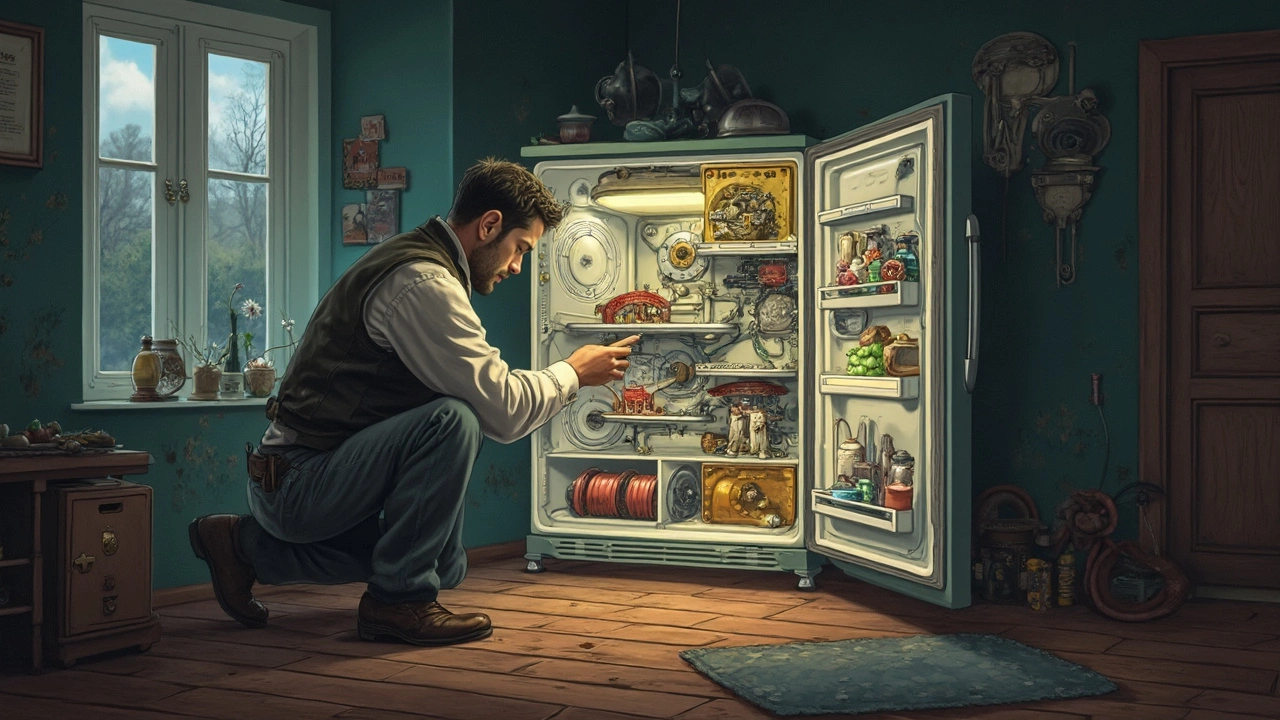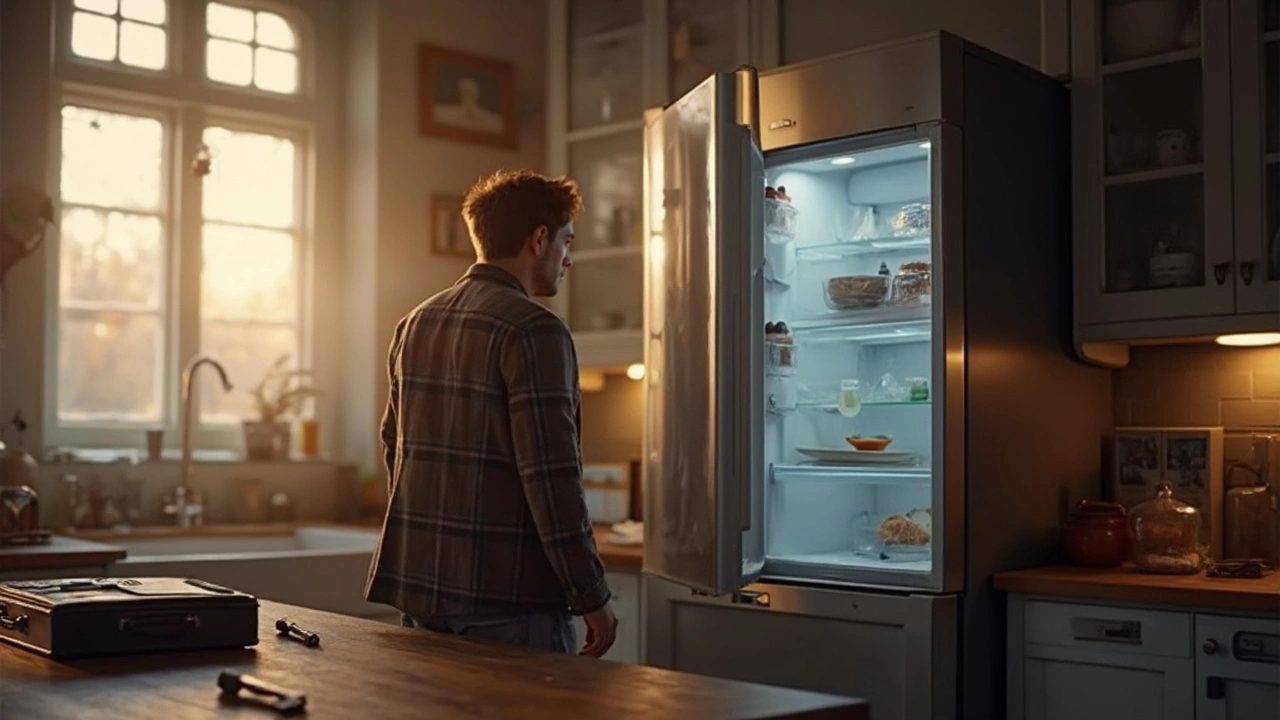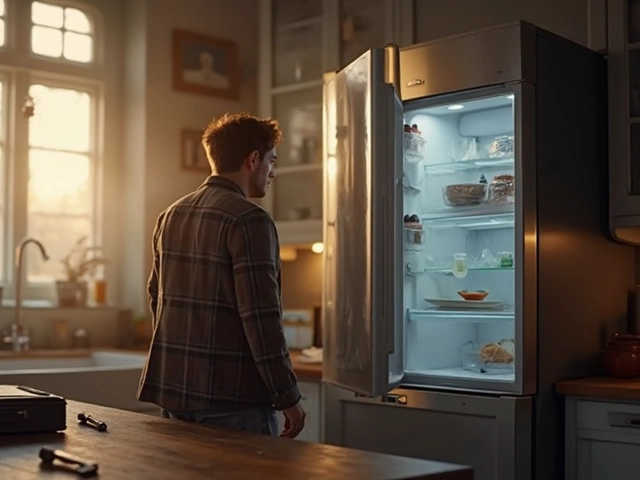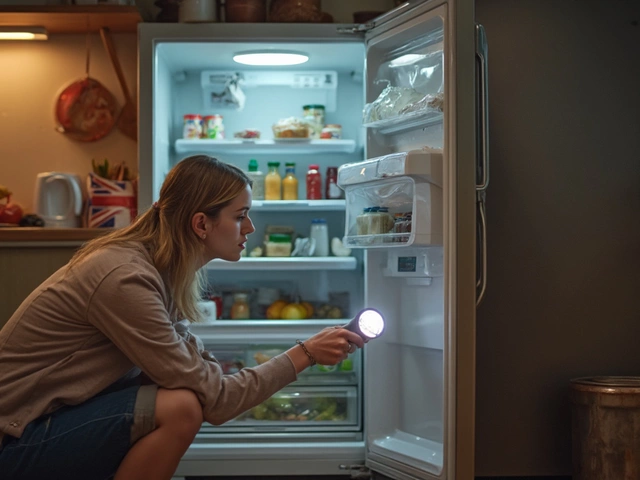When your freezer isn't cooling, it feels like you're standing in front of an open fridge during a power outage. Annoying, right? The good news is, there might be simple fixes before resorting to calling in the pros. Let's break it down together.
Step one, are you sure it's plugged in? It sounds silly, but power issues are sneaky, and cords can sometimes get knocked out of place, especially if you have a curious pet like my dog Muffin. Peek behind and make sure the cord is snugly in the wall. While you're at it, check your circuit breaker to see if a switch got flipped.
Still not humming? Check those settings! Accidentally bumping the dial when cramming after a big grocery haul is more common than you'd think. Make sure it's set to the right cooling level.
Check Power and Settings
First things first—let's ensure your freezer is getting juice. This might seem obvious, but power connections can be sneaky. Start by checking if the plug is firmly inserted into the wall socket. Believe it or not, pets, cleaning equipment, or even a fridge shuffle can accidentally dislodge the plug.
If the plug is secure yet the freezer remains silent, take a walk to the circuit breaker. There's a chance that a switch has tripped, particularly if you’ve been running multiple appliances in the same vicinity. Flipping the switch back should power things up again.
Inspecting the Power Cord
While you're back there, give the whole power cord a once-over. Look for frays or cuts in the cable. Damaged cords can prevent power from reaching your freezer, or worse, be a fire hazard.
If the power source checks out, the next step is to fiddle with the settings. Modern freezers may have digital controls, but many households still use ones with a manual dial. Sometimes, it’s as simple as bumping the setting back up after it accidentally got nudged down during the last visit.
Check the User Manual
Lastly, hunt down that user manual—either the paper version or online. Manufacturers often include troubleshooting tips in the manual that cover power issues specific to your model. Who knows, there might be a hidden reset button or a quirk you weren't aware of.
If your freezer still isn't cooling, it may be time to delve deeper into technical terrain, but at least you’ve eliminated some of the most common and resolvable issues related to power and settings.
Inspect the Coils
Your freezer's coils are like its veins, keeping the cooling 'blood' flowing. If they're clogged with dust or dirt, that cooling job doesn't happen efficiently, and before you know it, you're dealing with a freezer not cooling properly. Regularly inspecting them is key, and here's how you can do it.
Locate the Coils
First off, figure out where your freezer coils are located. They might be at the back or underneath, depending on the model. Grab a flashlight and take a peek; if it's been a while since you've checked, you'll likely see a dusty mess.
Cleaning Steps
- Unplug the Appliance: Safety first, folks. Make sure there’s no power running to the freezer before you get into the nitty-gritty.
- Brush Away Dust: Use a coil brush or a vacuum with a crevice attachment to gently remove dust. Be careful not to damage the coils.
- Check for Blockages: Once clean, ensure nothing is obstructing air flow around the coils.
Why It's Important
When your freezer can breathe easier, it can cool better too, helping it last longer and work more efficiently. Some experts even say that keeping coils clean can improve efficiency by up to 30%!
| Year | Maintenance Benefits |
|---|---|
| Yearly Coil Cleaning | Can boost energy efficiency by 30% |
It's a simple task that doesn't take long but saves you money and potential headaches down the road. Plus, avoiding a major repair means more time chilling—pun intended.

Assess the Door Seal
If your trusted freezer isn’t cooling like it should, the seal around the door might be to blame. A dodgy seal can let warm air in and cold air out, turning your freezer into a pricy cupboard. Let's check how tight it is.
Do the Dollar Bill Test
Here's a simple trick: take a dollar bill and close it in the freezer door. Try pulling it out. If it slides out easily without resistance, the seal may not be doing its job. You’ll need it snug to keep everything frosty.
Inspect for Damage
Over time, the seal—called a gasket—can get worn or cracked. Run your fingers along the gasket, inspecting for tears, cracks, or food particles lodged in the grooves. Even small gaps can let cool air escape, and that’s not what you want.
Cleaning the Seal
Is it dirty? A good cleaning can sometimes do wonders. Use a bit of warm, soapy water and a rag to clean the grooves. It might seem basic, but dirt particles can cause gaps in the seal.
Replacing the Gasket
If you find it too damaged to clean or fix, replacing it is the best option. You can usually grab a new one online or from your local appliance store. Installation isn’t too complicated either. Typically, you can peel off the old one and press the new seal in place.
Here's a quick fact table that might help:
| Problem | Solution |
|---|---|
| Gasket cracked/old | Replace gasket |
| Seal dirty | Clean with warm, soapy water |
| Poor door closure | Check for misalignment |
Checking the door seal is just one piece of the puzzle when fixing a freezer that won't cool. But this small step can make a big difference in keeping your food fresh and your energy bills down. So give it a whirl and see if your freezer perks up.
Consider the Thermostat
So, you've checked the basics, and the freezer still isn't playing nice? It might be time to take a closer look at the thermostat. This little gadget plays a big role in controlling your freezer's temperature. If it's off, well, your food might not be chilling as it should.
Start by setting the thermostat to a colder setting and see if it kicks in. If there's no change, the thermostat might be the issue. Malfunctioning thermostats are known culprits when it comes to cooling problems.
Testing the Thermostat
If you're something of a DIY enthusiast, here's a simple way to check the thermostat:
- Unplug the freezer for safety. Safety first, always.
- Find the thermostat by removing the control panel. It's usually behind the temperature dial.
- Use a multimeter to test for continuity. No continuity means the thermostat isn't working.
- If it's faulty, a replacement is typically under $50 and can save a lot of hassle.
If you replace it yourself, you might save some money. Just keep your model number handy when shopping for parts. Remember, a correctly functioning thermostat ensures your freezer cools efficiently.
Sometimes, it's just a small fix to get your freezer back to that chilly glory. But if the DIY approach isn't your thing, calling a pro is always a safe bet to avoid accidentally turning your freezer into a very roomy, not-so-effective cooler.




